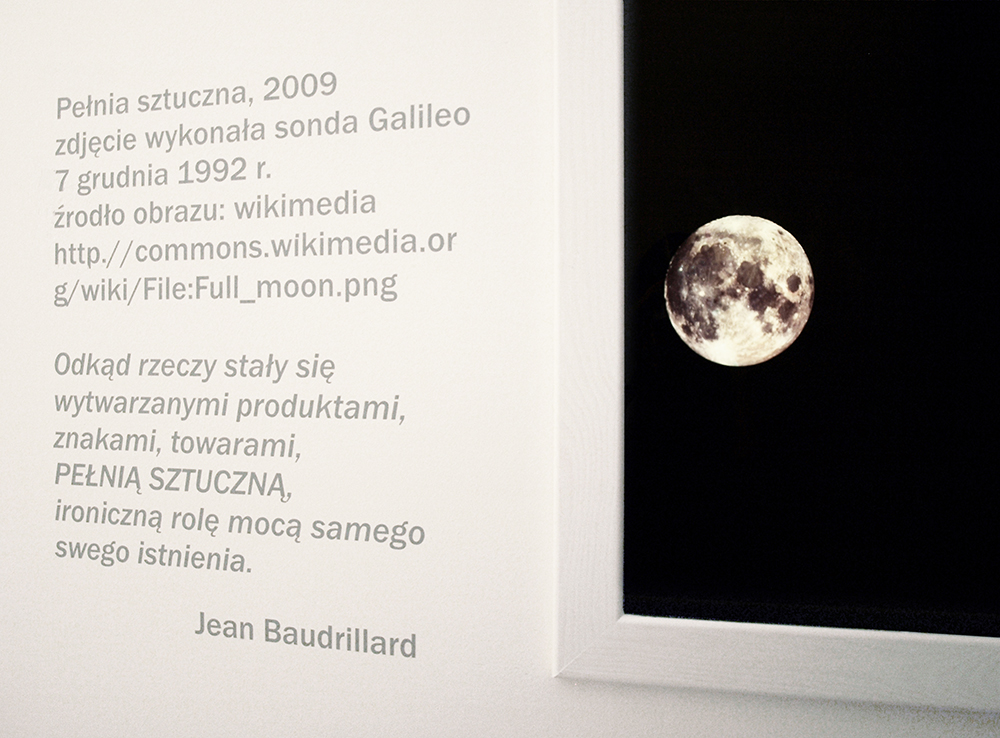On Whiteness, Elipse And Boredom
—The Mind's Journey Through The Elements
plexiglass in a white wooden frame 100 x 70 cm
solo exhibition
Studio BWA Wrocław, 2009
Studio BWA Wrocław, 2009
The idea behind the form of this exhibition was that most of the gallery space was inaccesable for the audience. The visitor rolled the ellipse on the plan of the gallery during the walk from one work to the next along the prepared corridor. The work spread in next rooms while the viewer could just look inside through the framed plexiglas hanging on the corridor wall.
—The Mind's Journey Through The Elements
plexiglass in a white wooden frame 100 x 70 cm
small black painted room
video [Vvooxx found-footage]
15 sec., looped
2009
The sceening in the corner of a black room*, breaking in 2/3 by the perpendicular between the two walls. The ship sails from the right to the left, patiently and necessarely conquer the next waves. It looks like the ship trying to get muddle through the corner.
still from the video and general view of the installation


—Artificial Fullmoon*
plexiglass in a white, wooden frame 50 x 70 cm, small room painted black,slide of the full moon [source of the image: wikimedia. The photo was made by the Galileo probe 7th December 1992, https://commons.wikimedia.org/wiki/File:Full_moon.png]. 2009
Artificial Fullmoon is an affirmation of mistakes in reading and understanding, based on non-translatable pun in Polish linked to Baudrillard sentence from The Conspiracy of Art: “Odkąd rzeczy stały się wytwarzanymi produktami, artefaktami, znakami, towarami, PEŁNIĄ SZTUCZNĄ, ironiczną rolę mocą samego swego istnienia.” This way the fragment of Baudrillard's sentence becomes Artificial Fullmoon.


—The End of the Performance's Experience
A view on the empty gallery space with the existing cube 2 x 2 m with its front wall repainted to black; the empty exposition's walls were lighted by the gallery spotlights, the cube was lighted by the fluorescent tubes on two sides.
installation views
plexiglass in a white, wooden
frame 100 x 70 cm, an empty gallery'
space inaccesable for the public,
2 gallery's spotlights, 2 fluorescent tubes,
acrylic; various dimensions, 2009
A view on the empty gallery space with the existing cube 2 x 2 m with its front wall repainted to black; the empty exposition's walls were lighted by the gallery spotlights, the cube was lighted by the fluorescent tubes on two sides.
installation views
photos: N. Ptak



—no title
steel, tar
steel, tar
90 x 90 x 100 cm
2009
photo: N. Ptak
—no title II
Lighthouse
The room with some beds, white linen on them, light tubes, paintings—no entrance to this room, just plexiglass plate instead the door.
Lighthouse
arcylic on canvas
60 x 90 cm
2009


